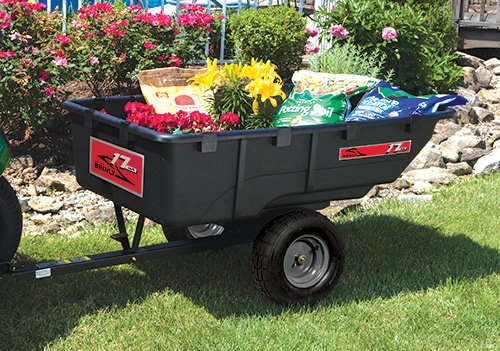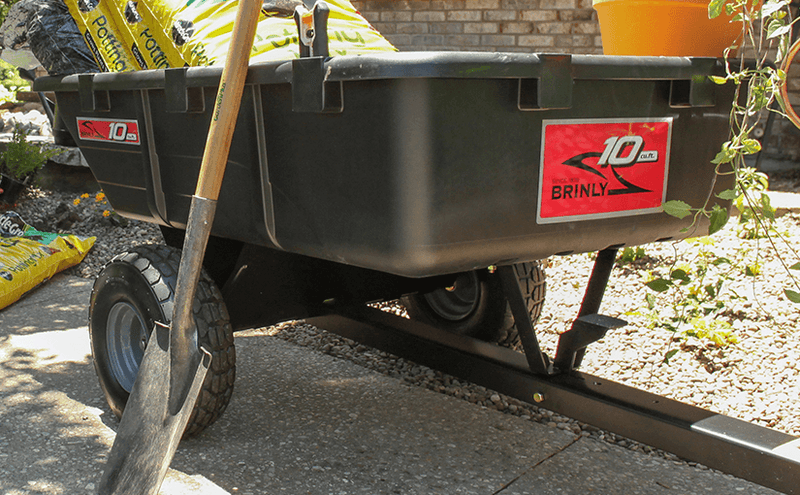
If you missed out on a spring planting, and are now wondering if you can plant shrubs and trees in autumn, then you're in luck! Fall is a wonderful time to plant many different varieties of trees and shrubs. The soil temperature is warm, the air temperature starts to cool, and depending on where you live, you also get adequate rainfall to help your woody plants prepare for winter.
The following tips don’t go into depth when it comes to the nuances of planting trees in the fall, but these are 9 important considerations as you plant this fall. There will be additional resources at the end of this blog to help you learn more about installing trees and shrubs in your region of the U.S. or Canada.
Here are those nine tips to successfully plant trees and shrubs this fall:
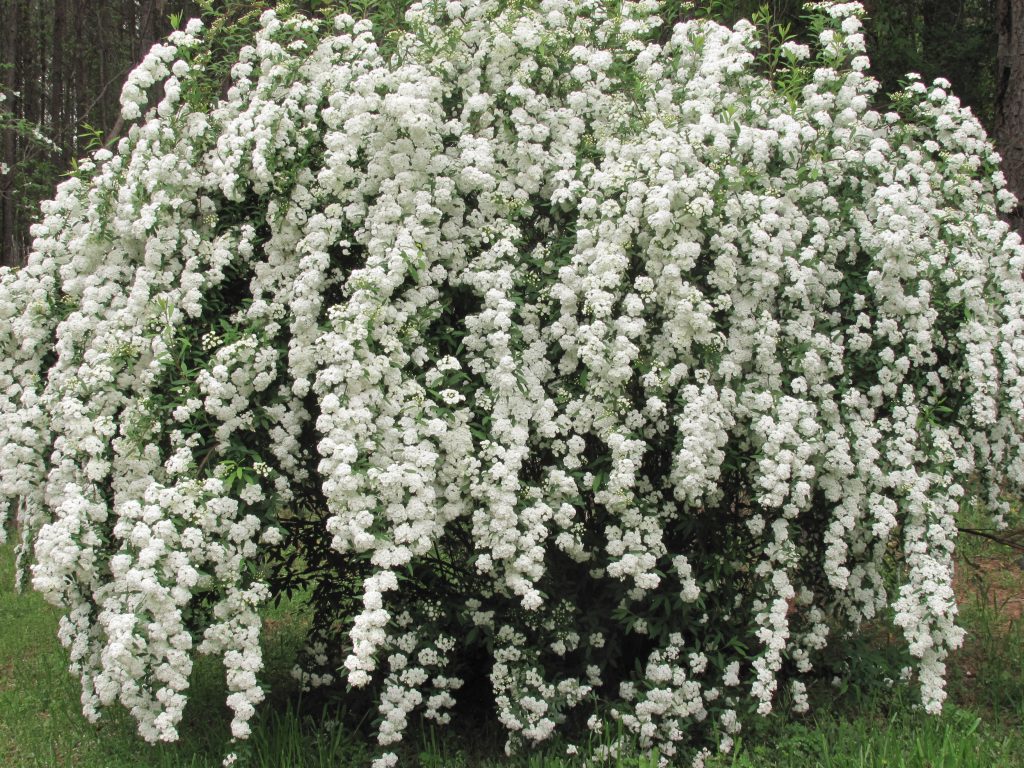 Spirea bush in bloom.[/caption]
There are many options when it comes to fall shrubs, as most deciduous shrubs can be planted in later seasons without causing issues. Home depot garden club recommends these favorite flowering shrubs for a fall planting, and even advises which zones they work best in via their plant hardiness zone map.
Spirea bush in bloom.[/caption]
There are many options when it comes to fall shrubs, as most deciduous shrubs can be planted in later seasons without causing issues. Home depot garden club recommends these favorite flowering shrubs for a fall planting, and even advises which zones they work best in via their plant hardiness zone map.
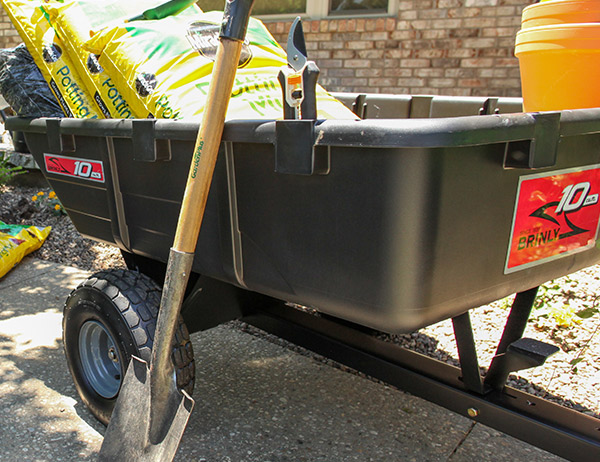
Brinly-Hardy offers two tow-behind carts with different haul capacities to help you plant your trees and shrubs this fall. Our 10 cu.ft. Poly Cart hauls up to 650 lb.You can find Brinly-Hardy’s 10 cu.ft. Poly Cart at The Home Depot in the U.S., The Home Depot in Canada, RuralKing.com, Hayneedle.com, and Amazon.com.
Our 17 cu.ft. Poly Cart hauls up to 850 lbs. It’s designed for the big jobs on your property. You can find the Brinly-Hardy 17 cu.ft. Poly Cart at The Home Depot (U.S.), The Home Depot (Canada) and RuralKing.com.
And if you have any questions about the 10 cu.ft. Poly Cart or the 17 cu.ft. Poly Cart, call us today at 877-728-8224 or fill out our contact form.
Why Fall is a Great Time to Plant
In general, most people think of spring as the typical preferred season for planting trees and shrubs-- and this may be true for flowers and vegetables. However, when it comes to trees and bushes, fall season plantings (mid-August to November depending on your location) offer many advantages. For starters, hot, dry conditions can injure many young tree specimens. the cooler temperatures mean the plants are less likely to be stressed by extreme heat. When air temperatures are cooler than the ground you're planting in, it encourages new root growth without the new top growth. This often results in a stronger, more resilient root system for the coming spring when these plants really jump-start their growth. Planting in the fall means your trees and shrubs get three seasons of root growth before the heat of summer hits, which is when they could suffer the most damage. Again, depending if you live in the northern or southern part of North America, you can plant trees and shrubs from September through October. Others who live in the southwestern part of the U.S. can plant trees and shrubs well into November.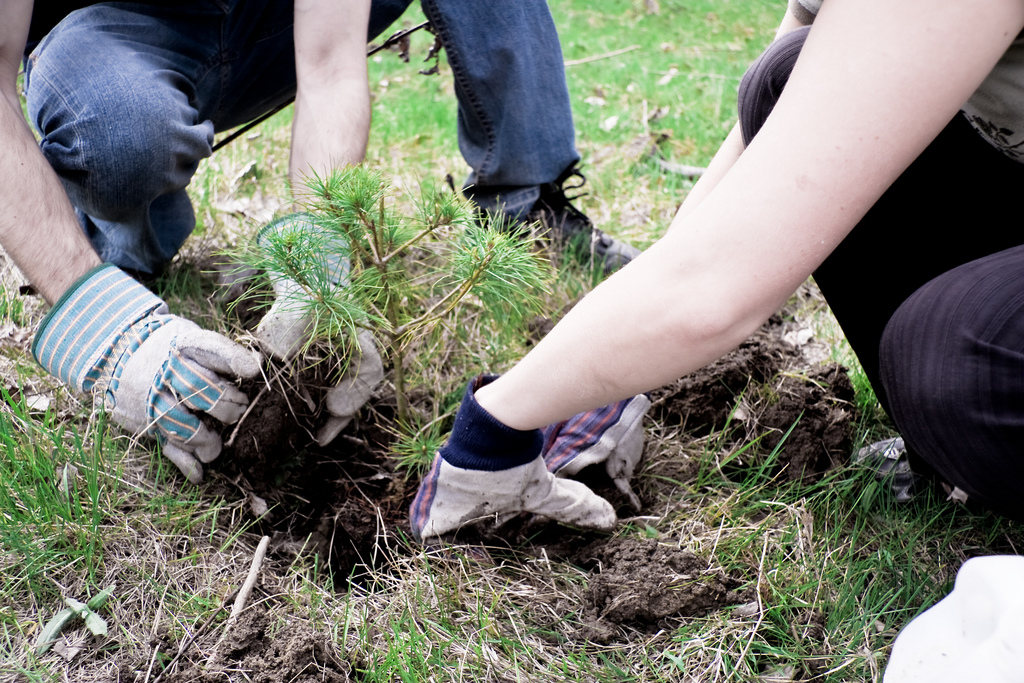 Tips for Successfully Planting Woody Ornamentals
Tips for Successfully Planting Woody Ornamentals
The following tips don’t go into depth when it comes to the nuances of planting trees in the fall, but these are 9 important considerations as you plant this fall. There will be additional resources at the end of this blog to help you learn more about installing trees and shrubs in your region of the U.S. or Canada.
Here are those nine tips to successfully plant trees and shrubs this fall:
- Have a plan of action. Why are you planting a tree or shrubs? Is it a wind-screen or for privacy? To help with noise pollution? Or do you want more shade in your yard?
- Shop only at a reputable nursery or garden center. You don’t want the cheapest plants you can find. Also, beware of “too good to be true” bargains.
- Dig a hole deep enough for the root ball where there’s 6” of clearance on all sides of the tree or shrub. When it comes time to dig in the dirt, you want to dig a hole deep enough so that the root ball stands steady on level Next, you want to make sure that there’s a least 6” on all sides of the tree to allow the roots to expand and grow.
- You want your newly planted tree or shrub to sit higher than the surrounding ground. You want your new tree or shrubs to stand slightly taller than the surrounding area. This helps aid in soil drainage and settling. Once the trunk is placed in a straight position, surround with soil and pack tightly, ensuring there aren't any air pockets.
- Don’t pick up your young tree by the trunk because it could break off from the root ball. The trunk is lighter than the root ball. If the trunk breaks off from the root ball, the tree or shrub will probably die.
- Cover the root ball entirely as well as the rest of the hole. Now, it’s time to cover the roots and hole with backfill. Make sure you fill the entire hole and tap down the soil before watering it.
- Don’t add fertilizer, but do mulch around your new tree or shrub. The tendency is to add beneficial nutrients whenever you plant. However, you don’t want to supercharge your trees or shrubs with fertilizer. Save fertilization until the spring.
- Give your new woody plant plenty of water and plan to keep watering it. Properly irrigating your new tree or shrub is essential. When you’re done backfilling your plant, add plenty of water that covers the hole. You don’t want to overwater or make it soupy.
- Don’t forget to add mulch. After you’re done planting your trees and shrubs, put up to four inches of mulch around the plant. You don’t want to create a volcano of mulch against the trunk because it’ll invite insects and disease to develop. However, an application of mulch helps the soil around your tree stay moist, maintain even temperatures, protects the roots from frost heave, and gives some nutrients to your plants. Instead of heaping mulch around the tree like a volcano, create a small water-holding basin around the trunk. It should look like a small crater surrounding the trunk.
Which Shrubs and Trees Can You Plant this Autumn?
[caption id="attachment_2281" align="alignright" width="203"] Spirea bush in bloom.[/caption]
There are many options when it comes to fall shrubs, as most deciduous shrubs can be planted in later seasons without causing issues. Home depot garden club recommends these favorite flowering shrubs for a fall planting, and even advises which zones they work best in via their plant hardiness zone map.
Spirea bush in bloom.[/caption]
There are many options when it comes to fall shrubs, as most deciduous shrubs can be planted in later seasons without causing issues. Home depot garden club recommends these favorite flowering shrubs for a fall planting, and even advises which zones they work best in via their plant hardiness zone map.
- Camellia Sasanqua: Drought tolerant with bright blooms.
- Spirea: Early spring bloomer and is drought tolerant once established.
- Oakleaf Hydrangea: Hardy and appreciates rich, well-drained soil and full sun.
- Rhododendron: Clustered blooms that prefer filtered sunlight and afternoon shade.
- Smoke Bush: Named for its wispy blooms that resemble smoke, hardy through most areas of the country.


